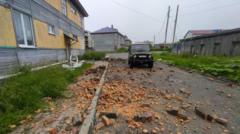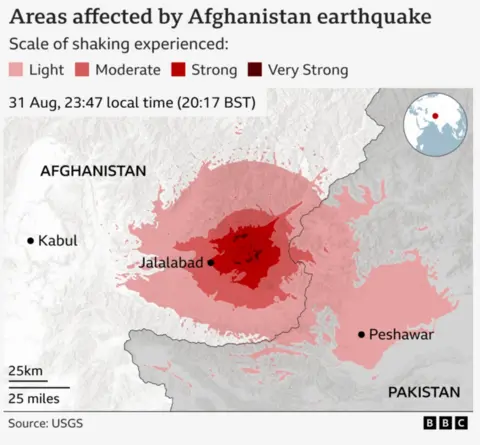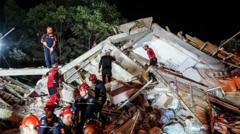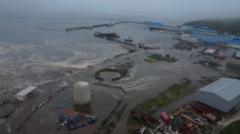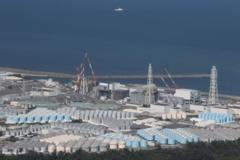The recent 8.8 magnitude earthquake that struck the Kamchatka Peninsula in eastern Russia at 11:25 local time on Wednesday (00:25 BST) has raised eyebrows, given its significant strength. However, the anticipated catastrophic tsunami effects, reminiscent of prior disasters like the Boxing Day tsunami in 2004 and the Japan earthquake in 2011, did not materialize to the extent feared. As millions of residents evacuated coastal areas across the Pacific, questions arose about the nature of the earthquake and its relatively mild tsunami impact.
The Kamchatka Peninsula is part of the "Pacific Ring of Fire," an area known for its seismic activity, accounting for 80% of the world's earthquakes. The tectonic movement involves the Pacific plate sliding underneath the Okhotsk microplate – a process that can lead to megathrust earthquakes when stress builds up and is subsequently released over miles of faults. According to Dr. Stephen Hicks from University College London, this large-scale rupture significantly contributes to the earthquake's magnitude.
Despite the earthquake's potential to displace vast amounts of water and generate massive tsunami waves, today's event resulted in only 4-meter (approximately 13 feet) tsunami waves reported near the eastern Russian coast. This is far less dramatic compared to the devastating waves recorded in past seismic events. Factors contributing to this decrease in tsunami severity include geographical considerations, such as the coastal bathymetry and the seismic depth of the quake—measured at around 20.7 kilometers (12.9 miles) deep, which could have reduced wave amplitude.
Furthermore, advancements in tsunami forecasting and early warning systems across Pacific nations have been vital in reducing casualties and damage. Innovative systems, established post-2004 disaster, allow for timely evacuations, underscoring the importance of preparedness. Recent data noted a preceding earthquake with a magnitude of 7.4 that struck nearby days earlier, but it highlights that scientists still contend with limitations in accurately predicting seismic activity despite ongoing advancements in monitoring.
As the Geophysical Survey of the Russian Academy of Sciences continues to observe the area, authorities remain vigilant for potential aftershocks in the weeks to come, reflecting on the importance of understanding both geological mechanics and effective emergency response systems. The lessons learned from past tragedies have proven critical in mitigating risks associated with such powerful geological events.
The Kamchatka Peninsula is part of the "Pacific Ring of Fire," an area known for its seismic activity, accounting for 80% of the world's earthquakes. The tectonic movement involves the Pacific plate sliding underneath the Okhotsk microplate – a process that can lead to megathrust earthquakes when stress builds up and is subsequently released over miles of faults. According to Dr. Stephen Hicks from University College London, this large-scale rupture significantly contributes to the earthquake's magnitude.
Despite the earthquake's potential to displace vast amounts of water and generate massive tsunami waves, today's event resulted in only 4-meter (approximately 13 feet) tsunami waves reported near the eastern Russian coast. This is far less dramatic compared to the devastating waves recorded in past seismic events. Factors contributing to this decrease in tsunami severity include geographical considerations, such as the coastal bathymetry and the seismic depth of the quake—measured at around 20.7 kilometers (12.9 miles) deep, which could have reduced wave amplitude.
Furthermore, advancements in tsunami forecasting and early warning systems across Pacific nations have been vital in reducing casualties and damage. Innovative systems, established post-2004 disaster, allow for timely evacuations, underscoring the importance of preparedness. Recent data noted a preceding earthquake with a magnitude of 7.4 that struck nearby days earlier, but it highlights that scientists still contend with limitations in accurately predicting seismic activity despite ongoing advancements in monitoring.
As the Geophysical Survey of the Russian Academy of Sciences continues to observe the area, authorities remain vigilant for potential aftershocks in the weeks to come, reflecting on the importance of understanding both geological mechanics and effective emergency response systems. The lessons learned from past tragedies have proven critical in mitigating risks associated with such powerful geological events.

